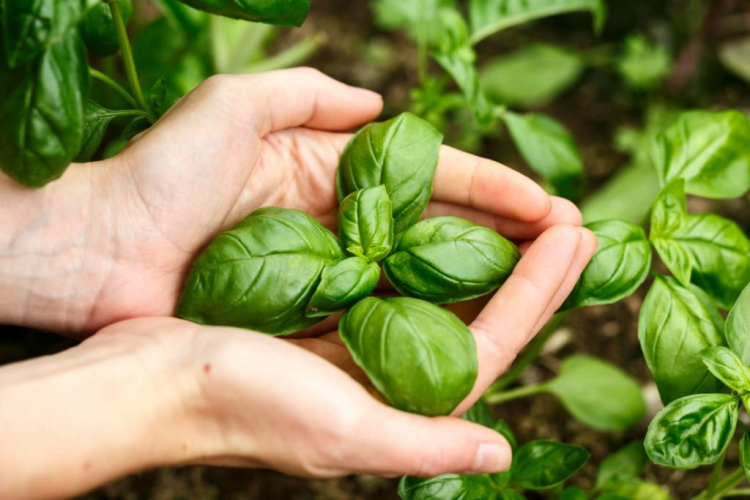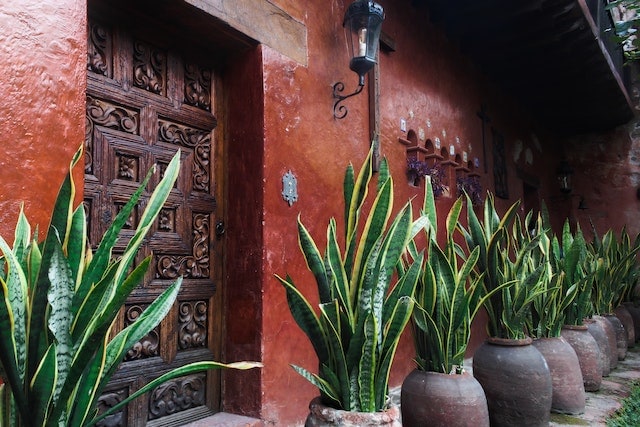Fertilizing Basil: Which Fertilizer Is The Right One?
In order for your basil to grow properly, it needs plenty of nutrients. We will show you what to consider when fertilizing basil. Basil ( Ocimum basilicum ) is not only very thirsty but also extremely hungry. The aromatic herb is therefore also counted among the so-called strong eaters. It is best to plant basil in a warm location because it does not tolerate cool temperatures (below 10 ° C).
Culture in a pot is therefore ideal. But regardless of whether you are growing the basil in a pot or in a bed: Always make sure that there is sufficient nutrient supply so that the herb grows well and you can harvest plenty of green leaves. But when do you fertilize basil? Which fertilizers are suitable and what is the best way to proceed? We have answered these questions for you in this article.
When is the best time to fertilize basil?
Table of Contents
Due to its sensitivity to cold, basil is usually grown in pots. More resistant basil varieties can also be planted outdoors without any problems over the summer. When planting, you should make sure to choose a location with humus soil or nutrient-rich substrate for cultivation in the pot. Lean soils can easily be upgraded with compost or manure. Especially the basil pots bought in the supermarket are happy to have enough nutrients in the soil after they have been moved.
When planting, you can also work some fertilizer into the top layers. It is best to use organic slow-release fertilizers. These are particularly gentle on your basil, the soil, and the animals in your garden. The granules of fertilizers dissolve when poured on and are broken down with the help of the microorganisms living in the soil. The nutrients are then gradually released to the plant. In this way, you can offer the basil optimal starting conditions as early as spring.

During the growth phase (May to September) it should be fertilized regularly because the need for nutrients is particularly high at this stage of development. Before you bring the basil inside in autumn to overwinter, you should reduce the amount of fertilizer again. Since the growth of the plant is no longer as strong during the cold season, small amounts of fertilizer should only be used every four to six weeks.
Summary: When to fertilize basil?
- Basic fertilization in spring
- Re-fertilize regularly during the growth phase
- Reduce fertilization in winter

Fertilizing basil: how and with what fertilize?
Every hobby gardener has to decide for himself which fertilizer is the right one. We will give you an overview of which fertilizers are suitable for supplying basil with nutrients and how you can best proceed with fertilization.
You Might Also Like Vietnamese Coriander
Organically fertilize the basil
If basil is not fertilized enough, this has a negative effect on the harvest. Over-fertilization or an unbalanced supply of nutrients to the plant is also undesirable. In this regard, organic slow-release fertilizers offer a great advantage. Long-term fertilizers in granulate form can be dosed well and thus minimize the risk of over-fertilization.
You might so like: How To Grow Spinach: Culture Guide And The Best Tips
Further advantages of organic long-term fertilizers are, for example, the following:
- Long-term supply of nutrients, as the fertilizer is only gradually broken down
- Activation of soil life and sustainable improvement of the soil structure
- Particularly gentle on the environment by not using chemicals
Organic universal fertilizer fully meets all these criteria and is therefore also wonderfully suitable for supplying your basil plant. The high nitrogen content promotes both growth and leaf formation. Sufficient phosphorus and potassium are in turn important for root formation and the resilience of your plant. The production of fertilizer from predominantly organic, vegetable residues from the food, luxury, and animal feed industries is also particularly resource-saving and sustainable.
So that you supply your basil with the right amount of nutrients, we have prepared detailed fertilization instructions for you below:
Long-term organic fertilization: instructions and dosage amounts for basil
- Before planting: work 40 – 60 g / m² (3 to 5 tablespoons) of organic universal fertilizer into the topsoil layers or mix about 2 g / l (½ teaspoon) into the substrate in a pot culture
- After setting, water the soil well so that the granules can loosen
- After 2 months you should fertilize again 30 – 50 g / m² (2 to 4 heaping tablespoons) or about 2 g / l for a pot culture
- Additional small fertilizers during the growth phase optimally support the plant in its development
You might so like: Plants That Do Not Like Mushroom Compost
Fertilize the basil with minerals
Blue grain, liquid fertilizers, and the like offer the advantage that the nutrients are in pure form and can thus be absorbed directly by the plant. However, this only provides a short-term nutrient boost for the heavily-consuming basil. Nevertheless, there is an increased risk of over-fertilization due to the high salt concentrations in mineral fertilizers. If used improperly, the salts can be washed out into deeper soil layers in outdoor cultivation and lead to contamination of the groundwater there. Organic fertilizers, on the other hand, provide the basil with nutrients over a longer period of time and are much gentler on plants, animals, and the environment.

Fertilize basil with home remedies
A natural fertilizer that occurs in almost every household is coffee grounds. This can be applied to the floor in a dry form as a thin layer. The actual waste product supplies the plant with nitrogen and at the same time keeps pests away. However, you shouldn’t fertilize the basil with coffee grounds too often. Otherwise, in the long run, the pH value of the soil can drop into the acidic range, which the plant does not tolerate particularly well in the long term.






